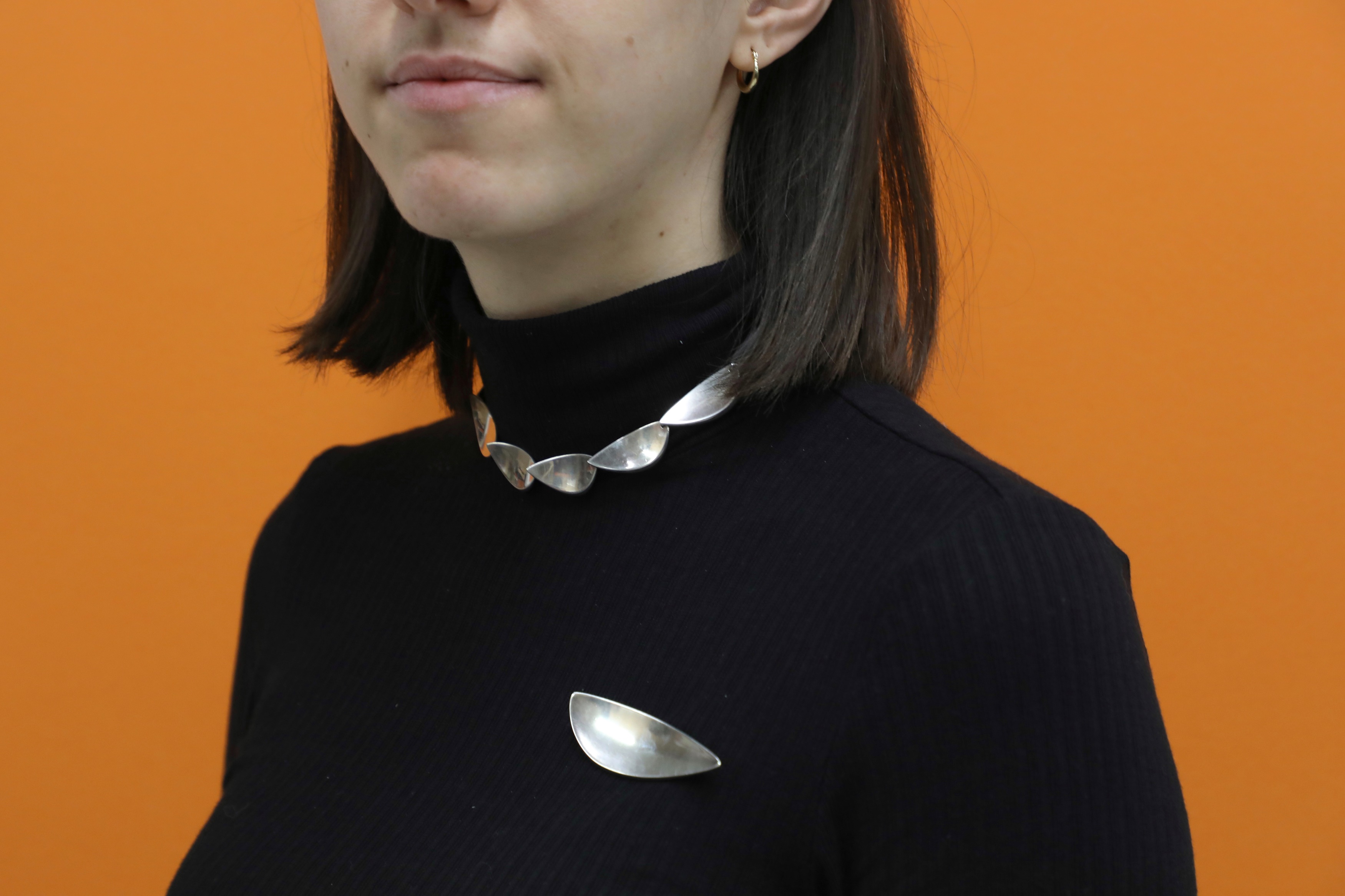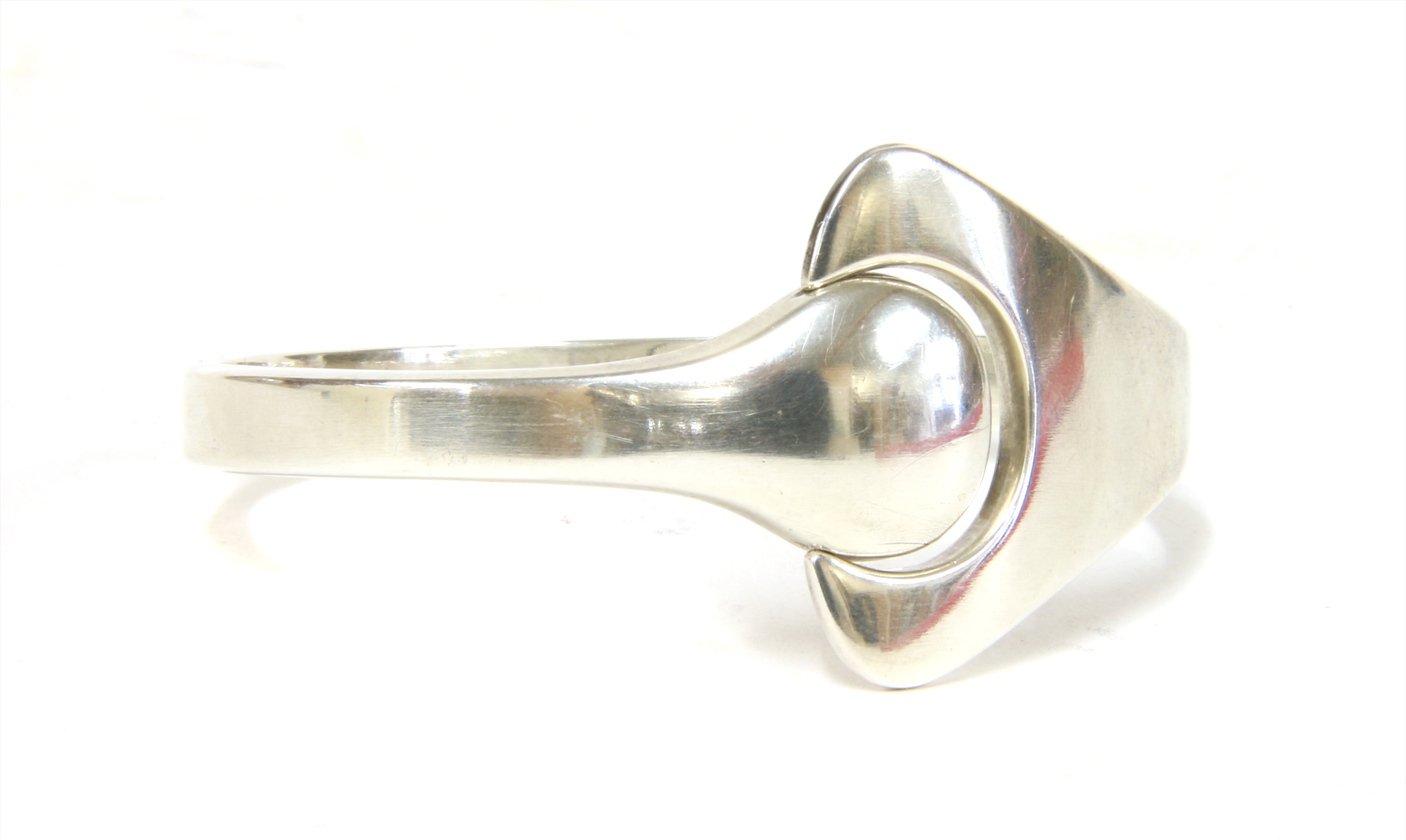Hans Hansen
Hans Hansen (1884-1940) trained as a silversmith in the Carl M. Cohrs Silverware Factory in 1903, and worked there until 1906 when he set up his own workshop on the Jutland Peninsula in Denmark, focusing on production of the hollowware and flatware in which he was trained. The firm of Hans Hansen did not establish its reputation for the refined modernist silver jewellery it is now known for until Hansen’s son, Karl Gustav Hansen, joined the firm as an apprentice in 1932...

Hans Hansen (1884-1940) trained as a silversmith in the Carl M. Cohrs Silverware Factory in 1903, and worked there until 1906 when he set up his own workshop on the Jutland Peninsula in Denmark, focusing on production of the hollowware and flatware in which he was trained. The firm of Hans Hansen did not establish its reputation for the refined modernist silver jewellery it is now known for until Hansen’s son, Karl Gustav Hansen, joined the firm as an apprentice in 1932. He designed a line of simple, functional jewellery called ‘Future’ featuring brooches, earrings, and rings, which sold successfully for at least a decade, and at age twenty five took over the running of the firm upon the death of his father.
Hansen also employed other well-known Danish modernist designers, cementing the firm’s place among mid-century Scandinavian silver producers. Bent Gabrielsen Pedersen worked there between 1953 and 1969 and was artistic director from 1962, during which time he won the Lunning prize (thought of as the ‘Nobel’ prize for Scandinavian design) and a gold medal for design at the Milan Triennial, as well as Bent Knudsen, and Allan Scharf, who was the leading designer by the 1980s before going on to design for Georg Jensen.

The company was taken over by the Royal Scandinavia Group in 1991, and so merged with Georg Jensen, under which name many Hansen designs are still being produced.
All Hansen pieces will feature one of the company marks; either HaH, a small H within a larger H, or Hans Hansen in a facsimile signature script. All three marks have been used throughout the history of the company, and the type applied will depend on the size of the piece. As such, it is not possible to use the marks to assist in the dating of a Hansen piece, as it would be with other designers whose marks evolved (e.g. Jensen). Similarly, the pieces are not signed with the name of the designer, but familiarity with the work and styles of those who designed for Hansen can assist with identification.
Recent News
Ken Bolan | Nature Follows Form
Few figures in the art and antiques world have shaped taste and defied convention quite like Ken Bolan. From the glamour of continental showrooms to the quiet beauty of rewilded West Country landscapes, Ken’s journey has been one of bold vision and creative instinct. This landmark sale, to be held on Wednesday 24 September, opens a window into that world – a personal collection amassed over five decades, filled with sculpture, furniture, and design with soul and story.
7 July 2025
John Ruskin | A Remarkable Archive Comes to Auction at Sworders
A major highlight of our forthcoming 'DREAMS | A Unique Private Collection' sale on 9 July is a remarkable archive of letters and manuscripts by John Ruskin (1819–1900), the celebrated Victorian polymath. This unparalleled group – numbering in the hundreds – is believed to be the largest collection of Ruskin correspondence in private hands and spans a vast range of topics from art and architecture to politics, religion, and personal reflection.
2 July 2025
Valuation Day Discovery
'The Scented Garden of Abdullah the Satirist of Shiraz' - also known as 'The Bagh-i-Muattar' - quickly caught the attention of our book specialists, when a copy bound in full vellum was brought in by a local client to our weekly valuation day.
2 July 2025